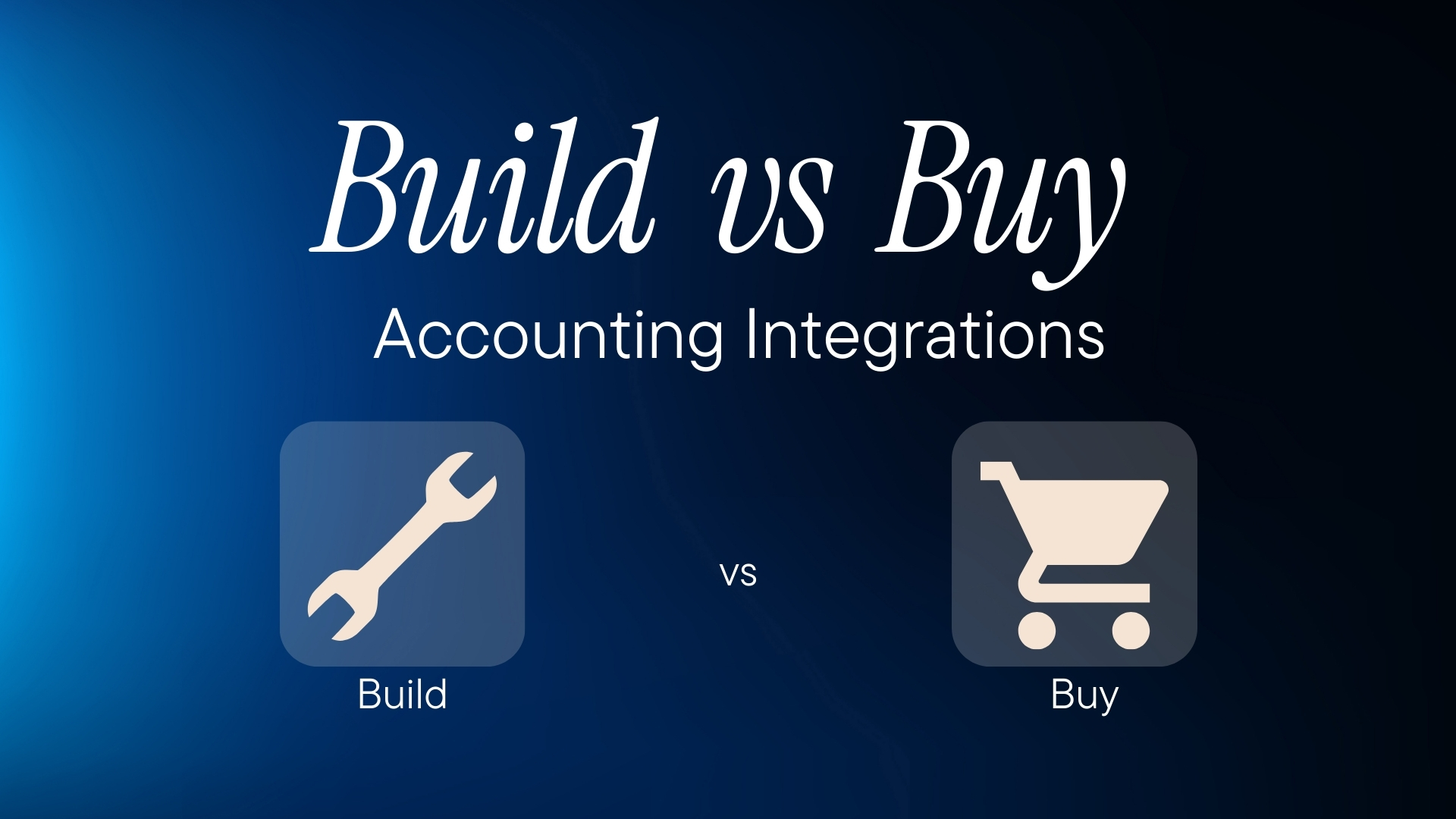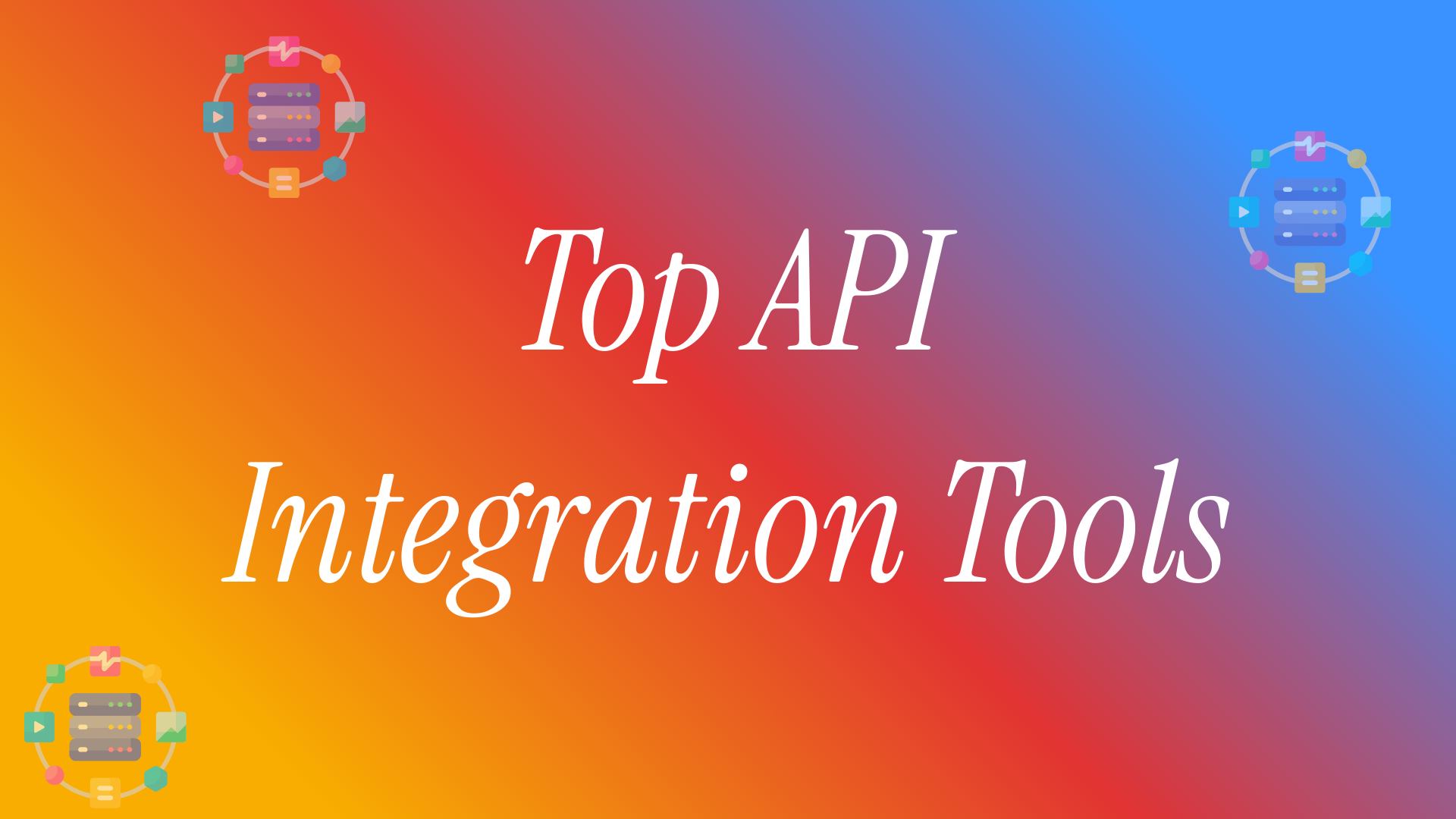Your engineering team just estimated six weeks to build accounting integrations. Three months later, you're still debugging authentication flows while your biggest competitor ships new customer features. The "build vs buy" decision for accounting integrations has burned more engineering hours and missed deadlines than any other technical choice in B2B SaaS. The real question isn't whether to build or buy. It's how to ship reliable integrations without sacrificing your core product development.
The Hidden Complexity of Accounting API Integrations
Building accounting API integrations looks straightforward until you encounter the unique challenges of financial data systems. What starts as "syncing invoices and payments" becomes managing complex accounting workflows, multi-entity hierarchies, and strict data validation requirements that vary across platforms.
Accounting APIs differ fundamentally from typical SaaS integrations. Financial data requires precise mapping of chart of accounts, handling of multi-currency transactions, and maintaining audit trails that comply with accounting standards. Each platform implements different approaches to core concepts like revenue recognition, tax calculations, and financial reporting periods.
The stakes are higher with accounting data. Integration failures don't just break workflows they create compliance risks, financial reporting errors, and audit trail gaps that affect business operations. Teams spend months learning accounting domain knowledge instead of building features that drive customer growth.
Accounting-Specific Integration Challenges
- Data Precision Requirements: Financial data demands exact decimal handling, currency conversion accuracy, and maintaining mathematical relationships between accounts, invoices, and payments.
- Multi-Entity Complexity: Enterprise accounting systems manage multiple subsidiaries, departments, and cost centers with different chart of accounts structures and reporting requirements.
- Compliance and Audit Trails: Every data modification must maintain detailed logs for financial audits, with some jurisdictions requiring immutable transaction records.
- Real-Time vs. Batch Processing: Accounting workflows mix real-time needs (payment processing) with batch operations (end-of-period reporting) that stress integration architectures differently.
Why Custom Builds Drain Engineering Resources
Development Timeline Reality
Custom integration projects consistently exceed initial estimates:
- Single platform integration: 2-4 months average development time
- Multi-platform support: Linear scaling with diminishing returns
- Production hardening: Additional 30-50% time for error handling and edge cases
- Ongoing maintenance: 20-30% of original development time annually
The Opportunity Cost Problem
Every engineering hour spent on integrations represents lost product development capacity. While your team debugs API authentication issues, competitors ship features that differentiate their products and capture market share.
Custom integrations force teams to become experts in systems outside their core competency. Senior developers spend time learning accounting platform specifics instead of solving customer problems.
Maintenance Overhead Reality
Production integrations require continuous attention:
- API version migrations and deprecation management
- Authentication system updates and token refresh logic
- Rate limit optimization and failure recovery
- Data consistency monitoring and error handling
- Security patches and compliance requirements
This maintenance work never decreases; it grows with each additional platform and customer.
The Unified API Advantage
Unified API platforms solve the fundamental trade-off between speed and control by abstracting platform complexity while maintaining development flexibility.
Single Integration, Multiple Platforms
Connect once to access dozens of accounting platforms through standardized endpoints. Add new platforms without additional development work; the unified API handles platform-specific implementation details.
Production-Ready Infrastructure
Unified APIs provide battle-tested infrastructure that individual teams can't economically build:
- Optimized rate limiting and request queuing
- Automatic retry logic with exponential backoff
- Webhook normalization and failure handling
- Authentication management across platforms
- Data validation and transformation layers
- Predictable Scaling Costs
Traditional custom builds scale linearly, each new platform requires significant development investment. Unified APIs enable logarithmic scaling where additional platforms add minimal complexity to your codebase.
Accounting API Use Cases Across Industries
Fintech Applications
-
Embedded Accounting for Business Banking: Digital banks integrate with QuickBooks and Xero to provide automatic transaction categorization, expense tracking, and real-time cash flow analysis directly within banking platforms.
-
Invoice Factoring and Lending: Alternative lenders pull accounts receivable and accounts payable data from accounting systems to assess creditworthiness, automate underwriting decisions, and monitor loan performance through real-time revenue tracking and cash flow analysis.
-
Automated Bookkeeping Services: Fintech companies build AI-powered bookkeeping tools that sync bank transactions with accounting platforms, automatically categorize expenses, and generate financial reports without manual data entry.
-
Corporate Credit Cards: B2B credit card providers integrate accounting APIs to enable automatic expense categorization, real-time budget tracking, and seamless reconciliation with existing financial workflows.
Vertical SaaS Solutions
-
Construction Management Platforms: Construction SaaS tools sync project costs, labor tracking, and material expenses with accounting systems to provide real-time project profitability analysis and integrated billing workflows.
-
Healthcare Practice Management: Medical practice software integrates with accounting platforms to automate insurance payment processing, track patient payment histories, and generate financial reports that comply with healthcare accounting standards.
-
Legal Practice Management: Law firm software connects billing systems with accounting platforms to track billable hours, manage trust accounts, and generate client invoices that automatically update financial records.
-
E-commerce and Retail: Online business platforms pull sales data, inventory costs, and payment processing fees from multiple sources into accounting systems for automated financial reporting and tax preparation.
-
Professional Services Automation: Consulting and agency platforms integrate time tracking, project billing, and expense management with accounting systems to provide complete financial visibility across client engagements.
-
AI Application: Machine learning platforms analyze accounting data to detect anomalies, predict cash flow patterns, and automate financial categorization. Tax automation tools integrate with accounting APIs to continuously monitor transactions, calculate tax obligations across jurisdictions, and automatically prepare compliance reports based on real-time financial data.
-
Tax automation: Machine learning platforms analyze accounting data to detect anomalies, predict cash flow patterns, and automate financial categorization. Tax automation solutions like Kintsugi integrate with accounting APIs and e-commerce platforms to continuously monitor sales across jurisdictions, automatically calculate nexus obligations, and file tax returns without manual intervention.
Common Integration Patterns
-
Bi-Directional Data Sync: Customer and vendor records flow between CRM/ERP systems and accounting platforms to maintain consistent business relationships across tools.
-
Automated Financial Reporting: Real-time data feeds enable automated generation of P&L statements, cash flow reports, and KPI dashboards without manual accounting system exports.
-
Multi-System Reconciliation: Integrations automatically match transactions across payment processors, banking systems, and accounting platforms to identify discrepancies and maintain accurate financial records.
Strategic Decision Framework
When Custom Building Makes Sense
Custom integrations provide maximum control and customization but require substantial ongoing investment:
- Integration features represent core competitive differentiation
- Unique business logic requirements that standard APIs can't support
- Dedicated integration engineering team with deep platform expertise
- Integration reliability directly impacts primary value proposition
When Unified APIs Deliver Better ROI
Most teams achieve better outcomes with unified APIs when:
- Supporting multiple accounting platforms is a requirement, not a differentiator
- Engineering resources should focus on core product development
- Predictable integration costs and maintenance overhead are priorities
- Time-to-market for integrations affects competitive positioning
Evaluation Matrix
| Criteria | Custom Build | Unified API |
|---|---|---|
| Initial Development Time | 3-6 months per platform | 2-4 weeks total |
| Multi-Platform Scaling | Linear complexity growth | Minimal additional complexity |
| Maintenance Responsibility | Full engineering ownership | Vendor managed |
| Customization Flexibility | Complete control | Configurable within API limits |
| Resource Impact | High ongoing commitment | Minimal after initial setup |
Implementation Approach Comparison
Custom Integration Path
Month 1: Platform research and authentication implementation
Month 2-4: Core data synchronization development
Month 4: Error handling, edge cases, and production deployment
Ongoing: Maintenance, updates, and additional platform support
Unified API Path
Week 1-2: API integration and endpoint configuration
Week 3-4: Data flow implementation and testing
Ongoing: Feature development focus with integration maintenance outsourced to the unified API solution provider. Your team can concentrate on product improvement by increasing coverage, adding connectors, and expanding use cases.
Total Cost of Ownership Analysis
Custom builds appear cheaper initially but carry significant hidden costs:
Custom Build Investment
- Development time: 3-6 months per platform
- Ongoing maintenance: 25-30% annual time commitment
- Scaling costs: Full development cycle for each new platform
- Opportunity cost: Reduced core product development capacity
Unified API Investment
- Implementation: 1-2 weeks setup time
- Subscription costs: Predictable annual pricing
- Scaling: Included in platform coverage
- Opportunity benefit: Full engineering focus on product features
The unified API approach typically delivers 3-5x faster implementation with significantly lower total cost of ownership over multi-year periods.
For example, annual expenses for building in-house integrations can reach $50,000 to $150,000 per integration, including development and maintenance, while platforms like Apideck offer plans starting at €299 per month.
Making the Strategic Choice
The accounting integration decision determines how quickly you respond to customer demands and market opportunities. Teams choosing custom builds often underestimate the long-term resource commitment and opportunity costs.
Unified APIs eliminate the false choice between speed and control. Implementation takes weeks instead of months, maintenance becomes vendor-managed, and engineering teams focus on building customer value instead of managing API complexities.
Apideck's unified accounting API provides production-ready access to QuickBooks, Xero, NetSuite, Sage, and 50+ other platforms through a single integration point. Engineering teams ship integrations in days, not months, while maintaining development focus on core product features.
Ready to get started?
Scale your integration strategy and deliver the integrations your customers need in record time.








